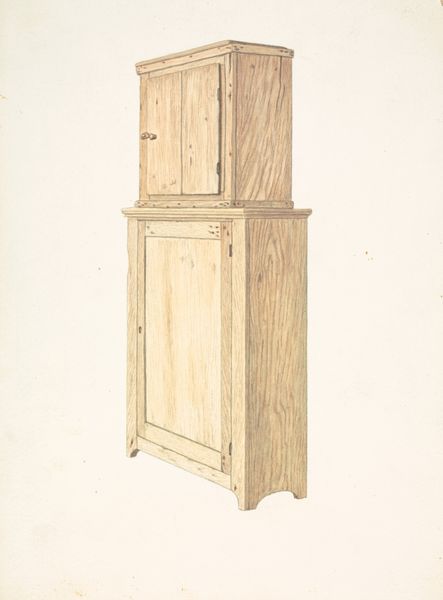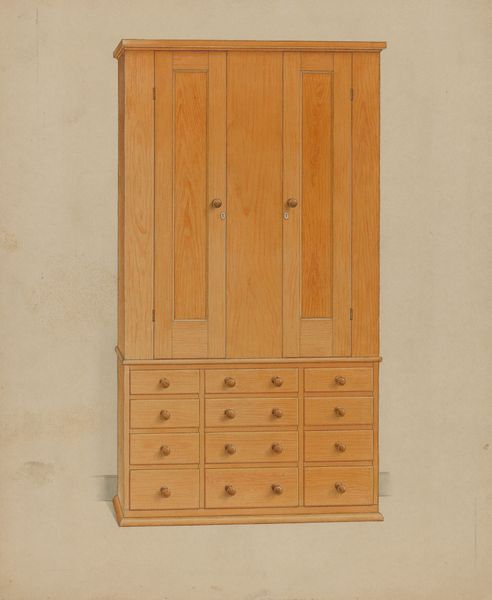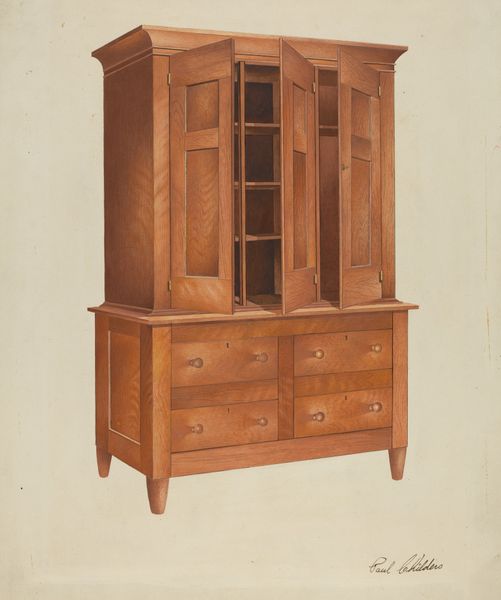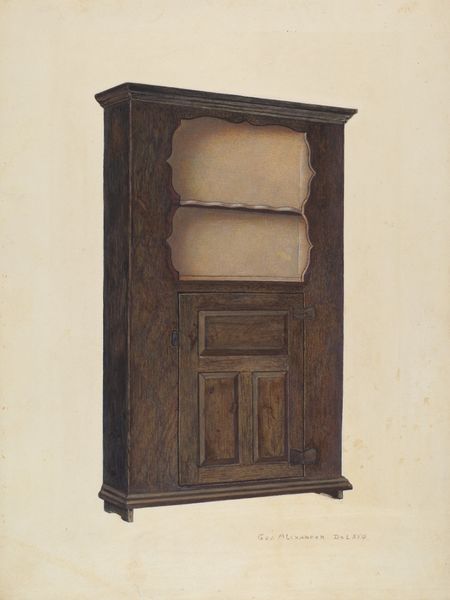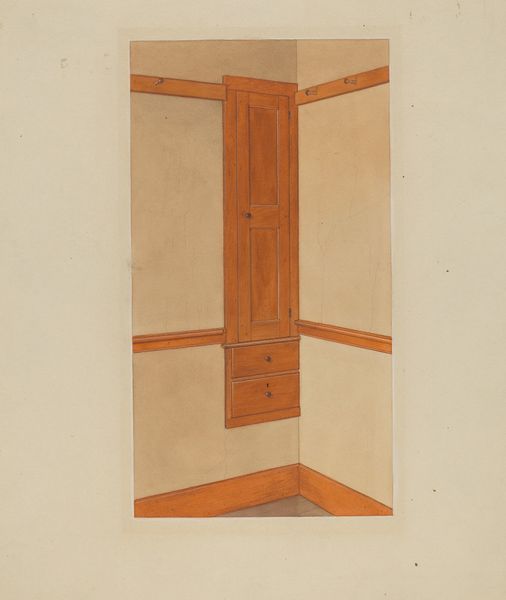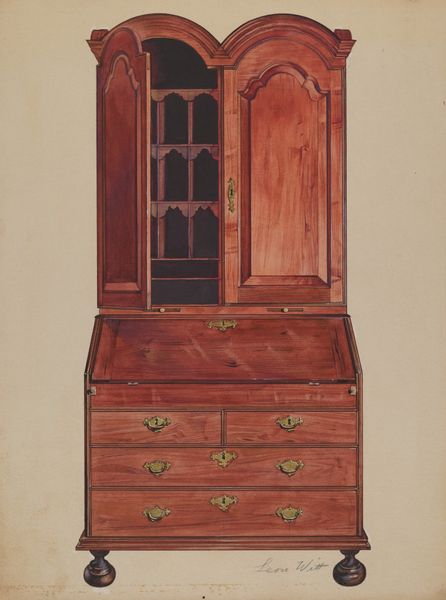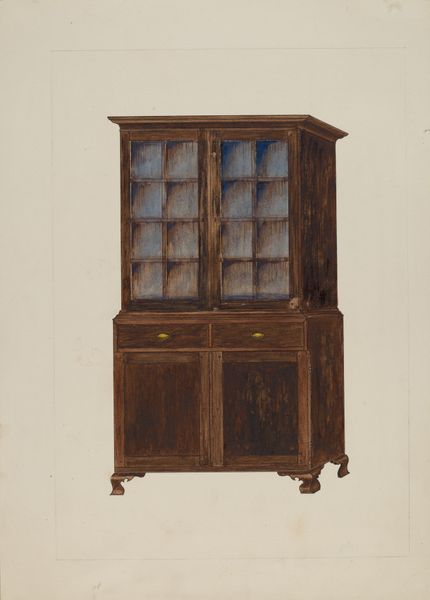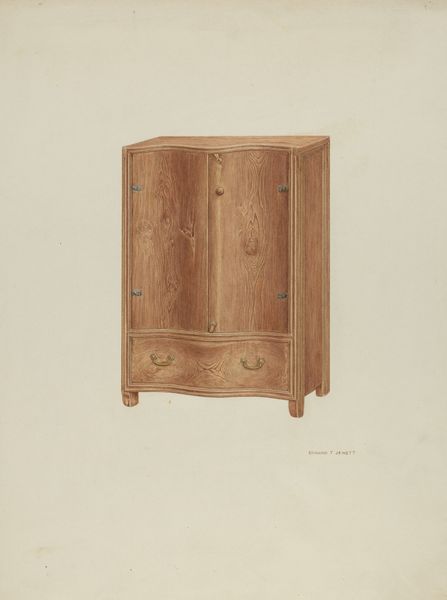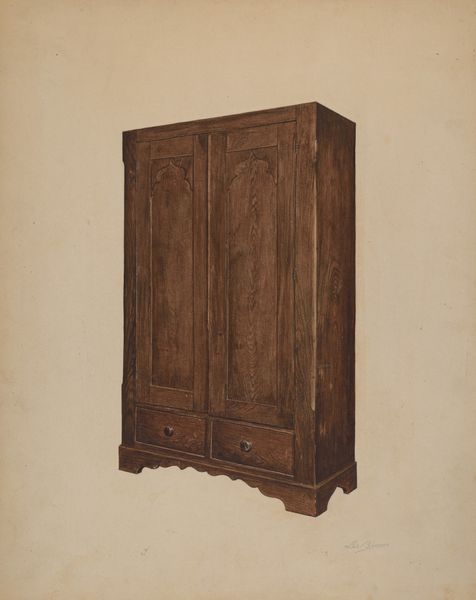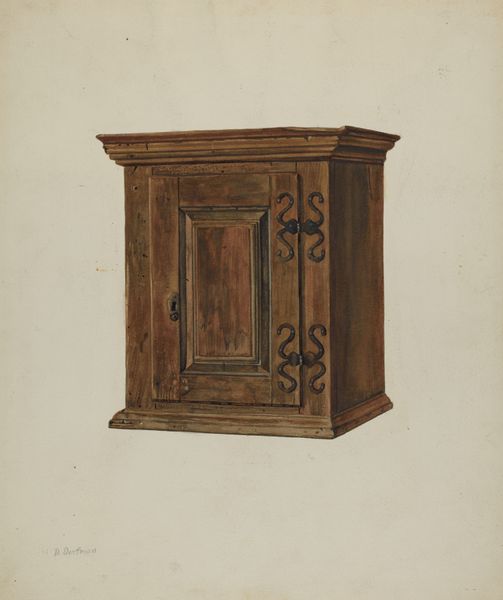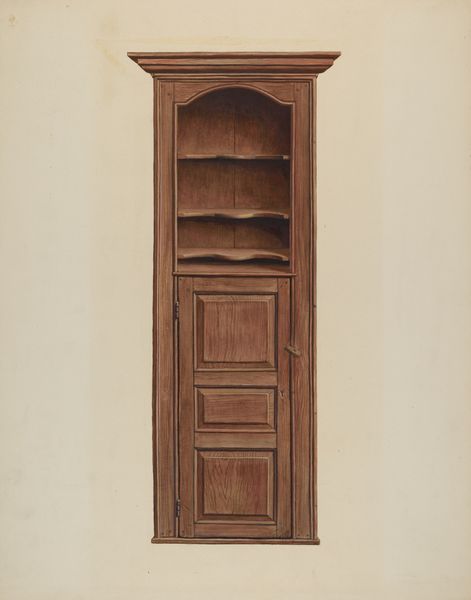
drawing, paper
#
drawing
#
charcoal drawing
#
paper
#
oil painting
#
folk-art
#
watercolour illustration
#
watercolor
Dimensions: overall: 35 x 23.8 cm (13 3/4 x 9 3/8 in.) Original IAD Object: Approx. 7' high
Copyright: National Gallery of Art: CC0 1.0
Editor: Here we have a piece titled "Corner Cupboard," made around 1938, attributed to Michael Riccitelli. It's a drawing on paper, using what looks like charcoal and maybe watercolor? It's a rather simple depiction, almost architectural, but I find it oddly charming. What are your initial observations about the work, Professor? Curator: The initial thing that captures my attention is the interplay of geometric forms. Note the acute angles of the cupboard meeting the flat plane of the paper, and how the curvature of the scalloped shelves above provides a softer contrast. How does the artist utilise value to describe form and create depth within this essentially two-dimensional medium? Editor: Well, the shading, particularly within the wood grain, gives it a sense of roundness and three-dimensionality. It’s like the artist is trying to capture the tactile quality of the wood itself through varied darkness. Do you think that relates to folk art since it has functional origins? Curator: Indeed. It transcends mere depiction, evolving into a commentary on material qualities. How does the subdued palette enhance or diminish the perception of functionality? Consider the visual impact. Is it designed to be strictly utilitarian, or is it elevated through aesthetic considerations like shading and form? Editor: I see what you mean. The muted tones do emphasize the material, moving it away from pure functionality and bringing it closer to a study of form. Looking at how the light reflects, creating highlight and shadows across the piece, is fascinating in and of itself! Thanks! Curator: And observing closely reveals how a commonplace subject when elevated through deliberate execution becomes a statement of structure, form and material. A worthy consideration, indeed.
Comments
No comments
Be the first to comment and join the conversation on the ultimate creative platform.
